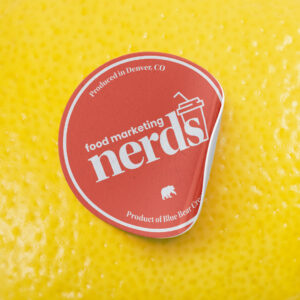Ah, the end of the year. The holiday parties, the time spent with family, and the process of figuring out what to do for New Years. While that’s transpiring for most, we at Blue Bear have been analyzing the current and future state of the fast casual restaurant industry to keep you in the know for the 2016 trends.
We can start by noting that 2015 was an exceptional year for the fast casual industry. This in turn, makes our anticipation feverish for 2016. Here are a few statistics from 2015 to get your excitement brewing:
- The National Restaurant Association estimates casual-dining sales to be at $709 billion for 2015, up 3.8 percent from 2014.
- Freshii – a healthy fast-casual restaurant has opened its first 100 locations at a pace faster than Subway, McDonald’s and Starbucks.
- According to the NPD Group, a market research firm, fast-casual visits have increased by 5 to 9 percent each year over the past five years.
- Chipotle reported a 19.8 percent increase in comparable sales in 2014’s third quarter, while McDonald’s reported 3.3 percent decrease in U.S. comparable sales in Q3.
What these statistics don’t represent is that millennials have been the largest age group driving the increase in visits and, in turn, profits for fast casual restaurants. This makes sense, because there are an estimated 80 million millennials in the United States with a discretionary spending power of $1.3 trillion, (which only continues to grow as we mature into our prime spending years).
According to Restaurant Marketing Labs, millennials spend more per capita in restaurants than any other generation. Yet, they are spending this at chain restaurants that don’t have paid advertisements on TV like that of McDonalds or Subway.
Unlike previous generations, millennials have grown up with a plethora of research tools to help them decide where they should eat their next meal. The question millennials often ask themselves is, “Why blindly settle for a subpar dining experience when discovering great options is right at my fingertips?” This leads to extensive research by the user, and with social media platforms maturing as search engines through 2016, we have the tools to do it.
Millennials often check a brand’s social media accounts, like Instagram, to assess the company’s personality and quality of its food offerings. As a first point of contact with potential millennial customers who generally consider themselves foodies, artistic photography and copy with a consistent tone of voice are often the first steps to converting exploration into intrigue, and intrigue into advocacy.
When searching for places to eat, millennials engage with prospective brands like it’s a relationship, meaning transparency in messaging will grow in importance in 2016.
We’re quick to spot contradictions in what brands say versus what they do; and with the growth in news sharing platforms, our opinions can spread throughout social media like wildfire, for better or worse.
Storytelling will continue to be the method in which brands best form a strong relationship with millennials in 2016. Despite the chain’s recent E. coli outbreak (which we believe they will be able to bounce back from) Chipotle is a great example of this. Having pledged to remove GMOs from their food in 2013, they held true to this promise by nearly completing the transition in 2015 and are vowing to make good on their word in the next year by replacing the ingredients of their last preservative containing item on the menu, tortillas. It was big shift for the brand, but without a doubt, a home run – particularly with Generation Y.
On their social media accounts, Chipotle takes pride in their ingredient quality and, through the use of creative photography, makes their food look as captivating as we already know it is. Chipotle is the posterchild for brand building, not only for acting on consumer sentiment surrounding GMOs, but also for their commitment to causes in which their millennial customers believe. This in turn generates even more share-worthy social media content and opportunities to convert customers into raving brand advocates. In short, they walk the walk.
In 2016, expect to see the fast casual restaurant growth continue as millennials increase their status as the segment’s largest customer demographic.
Contrary to what reports may claim, millennials are loyal customers so long as a brand can engage them through storytelling, rather than hard selling, and provide a product worth talking about. Millennials are a savvy group of consumers whose loyalty can be won through great service, an excellent product, and a story worth sharing.
The fast casuals who will experience the biggest success with millennials in 2016 (and beyond) are the ones who tell genuine stories about their companies through high quality, creative content.
Sources:






